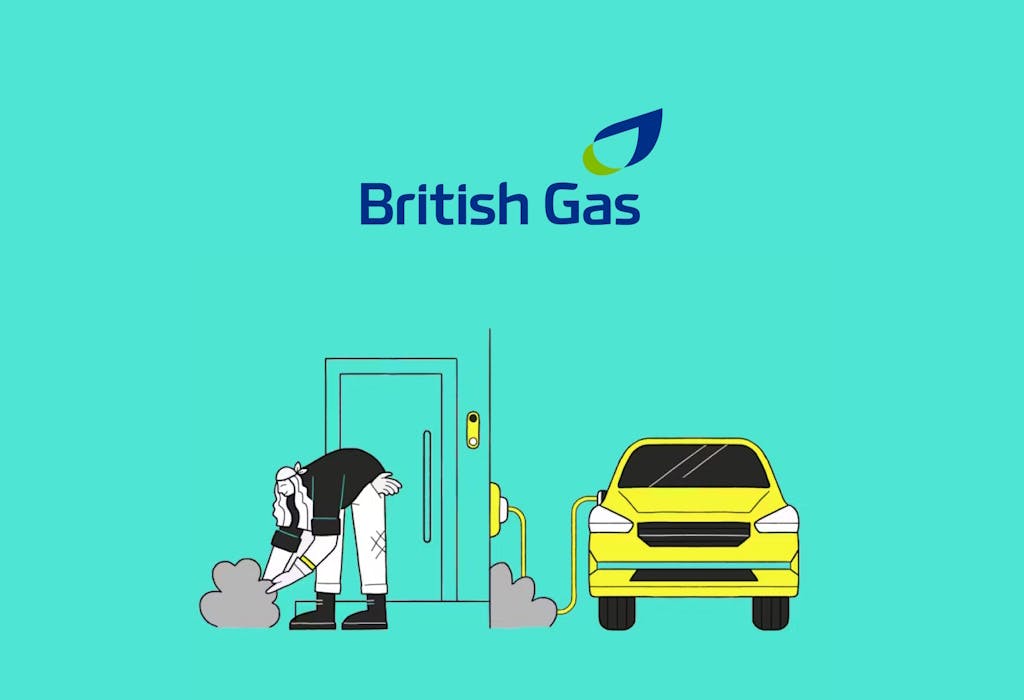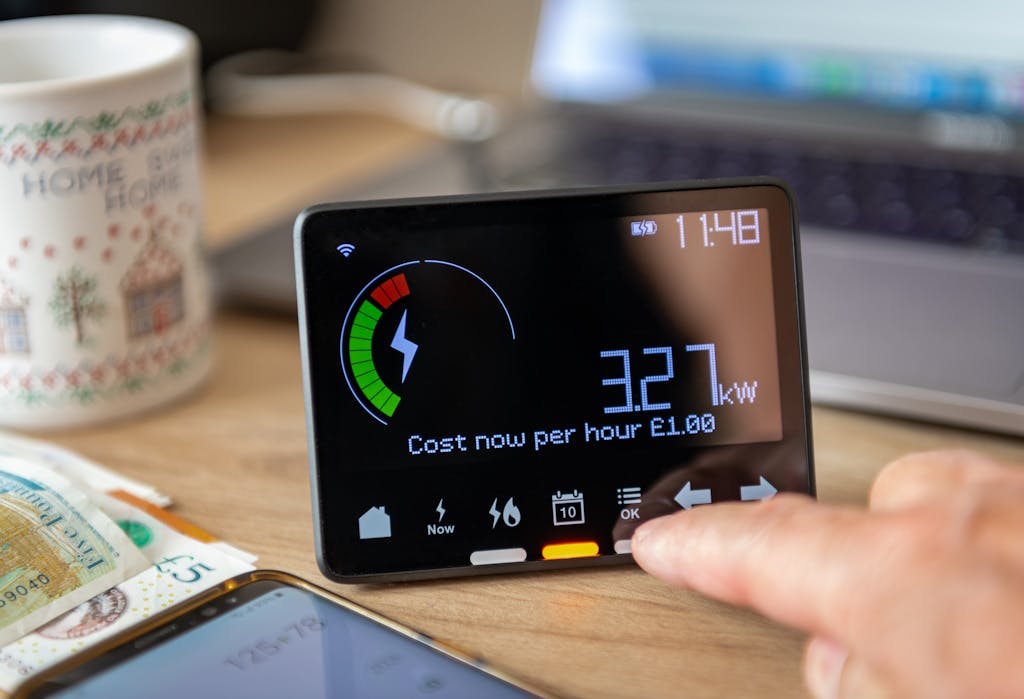- Solar advice hub
- Exporting-to-the-grid
- British Gas Electric Driver: explained
British Gas Electric Driver: explained
Here's how British Gas Electric Driver works, how much it can save different homes, and whether it’s worth it.


Why you can trust our content
We know that the solar industry is full of misinformation, but we only use reliable sources, including:
- Our experienced solar experts, installers and system designers
- Our own database of solar & battery system designs
- Authoritative bodies like MCS and the UK government




At a glance
Energy suppliers are increasingly trying to tempt electric vehicle drivers with tariffs that make charging cheaper – but often, they’re also available to households without an EV.
One of the best examples is British Gas Electric Driver, which offers five off-peak hours per day in which you can charge your car, power your appliances, or fill your storage battery with cheap electricity.
In this article, we’ll explain how Electric Driver works, how much money different households can save, and whether it’s worth it.
If you’re wondering how much you could save with a solar & battery system, click the button below, enter a few details, and we’ll generate an estimate.
What is British Gas Electric Driver?
British Gas Electric Driver is a time of use import tariff that’s available to all households, regardless of whether you have an electric vehicle or not.
It offers a 7.9p per kWh off-peak rate between 12am and 5am that you can use to charge or power anything in your home.
The rest of the time, you’ll pay 25.25p per kWh on average, though this changes depending on where you live. This is slightly above the price cap’s electricity unit rate.
If you shift the bulk of your consumption to this off-peak period – or use this low-cost electricity to fill your storage battery – you can save hundreds of pounds per year.
Of course, if you do have an electric vehicle, you can also make significant savings by charging it during this period.
As it’s solely an import tariff, solar homes will also need to pair it with an export tariff to make the most of their panels – more on that below.
To learn about other, similar offerings, read our regularly updated list of the best EV tariffs.
How does it work?
Electric Driver works just like any other tariff with peak and off-peak periods.
Households that sign up to the current version of the tariff – Electric Driver v12 – will be able to use it at its current, fixed prices until at least 31 December 2025.
As soon as you’ve registered, you can start benefiting from the tariff’s off-peak period.
Your smart meter will record when your household uses electricity, and any consumed between 12am and 5am will be charged at the off-peak rate.
Any electricity used the rest of the time will be charged at the peak rate.

British Gas Electric Driver rates
From 12am to 5am, any electricity you import from the grid will cost 7.9p per kWh.
This gives you 35 hours of off-peak electricity every week that you can use to charge your EV or storage battery, or use to power your high-consumption household appliances.
The rest of the time – that is, from 5am to 12am – you’ll pay the peak rate for any electricity you get from the grid. This is currently 25.25p per kWh, on average.
You’ll also pay a standing charge, which will be 58.83p per day on average. Rates will differ depending on where you are in the country, though – for instance, customers in London pay 48.69p per day.
You don’t need an EV to qualify, but if you do have one, other rates are available to you through Electric Driver.
Households with an EV and a Hive charger can qualify for Hive SmartCharge, which offers a 4p per kWh discount on your household’s off-peak rate of 7.9p per kWh.
To get what is effectively a 3.9p per kWh rate, just sign up and charge your EV for a six-hour period that covers the 12am to 5am off-peak period.
If you don’t have an EV charger yet, you can qualify for FreeCharge, a scheme that gets you 2,290kWh of free electricity to charge your EV with if you buy a Hive charger. Currently, Hive is selling the EO Mini Pro 3, which is a solar-compatible EV charger.
2,290kWh is more than enough to cover the average EV driver’s total usage for the year, despite the fact that you can only use it during Electric Driver’s 12am to 5am off-peak period.
How much money can you save?
A household with average electricity consumption (3,400kWh per year), solar panels, and a 10kWh battery can practically power its entire usage on the off-peak rate.
You could save up to £564 per year, compared to the October 2024 price cap – cutting your electricity bills by 68%.
A home with a smaller battery would still be able to get a large chunk of its electricity on the off-peak rate. For instance, a 5kWh could import 54% of the average household’s electricity for this low-cost price.
And if you also qualify for Hive Solar Saver, you can cut the peak rate by 25%.
When combined, this would allow the average household to save £391 – which equates to a 47% reduction in your electricity bill.
Combining British Gas Electric Driver with an export tariff
If you have a solar & battery system, you’ll almost certainly have plenty of excess electricity to send to the grid.
And if you’re exclusively using your battery to import and store off-peak electricity, as many homes on Electric Driver do, you’ll have even more electricity to export.
Fortunately, you can get paid for every kWh of electricity you send to the grid, simply by signing up to an export tariff.
And if your import tariff is British Gas Electric Driver, we'd recommend choosing British Gas Export and Earn Plus as your export tariff, which pays 15.1p per kWh.
However, British Gas doesn’t compel Electric Driver customers to use one of its export tariffs, so you can also choose a different supplier’s rate if you wish.
Just make sure it’s not an exclusive rate that requires you to become an import customer, otherwise you won’t be able to use Electric Driver or the Hive Solar Saver discount.
For more information – and to see if there are better tariffs available – check out our up-to-date guide to the best SEG rates.
How much can you earn with Export and Earn Plus?
A home with a 4.4kWp solar panel system that experiences average UK solar irradiance will earn around £192 per year.
These earnings come from the household exporting 34% of its solar-generated electricity.
However, if you sign up to Electric Driver, you’ll export more of the electricity your panels produce, since your battery is being used to store off-peak grid electricity.
In this situation, you’ll usually export around 65% of your solar-generated electricity, which will result in earnings of £330 per year.
This will vary depending on the size of your battery, how much of your solar-generated electricity you use, and your overall electricity consumption.
How can you sign up for British Gas Electric Driver?
If you’re already receiving your electricity from British Gas, you can login to your online account and switch to Electric Driver straight away, as long as you have a smart meter.
If not, the first step is still requesting a free smart meter from your energy supplier.
You can then switch to Electric Driver by getting a quote and filling in a form online with all the standard information – like your home, contact, and payment details – then accepting the terms and conditions.
Eligibility requirements
The only eligibility requirements for British Gas Electric Driver are that you own a smart meter and pay by direct debit.
In every other way, it’s a standard import tariff. You don’t need an electric vehicle or anything else to qualify.
How long does it take?
If you’re a British Gas electricity customer, just let the company know that you want to switch tariffs, and the change should happen almost instantly.
If you need to change suppliers, it should take a maximum of three weeks for the two companies to complete the move.
This time limit is due to the Energy Switch Guarantee. This list of standards was created by trade body Energy UK, and all major suppliers have agreed to follow it.
Is British Gas Electric Driver worth it?
British Gas Electric Driver is absolutely worth it.
Whether or not you have an EV, it can save you hundreds of pounds per year by providing you with cheap off-peak electricity that you can use to power your home’s needs.
And if you own a solar & battery system, this tariff allows you to profit by exporting more of your solar-generated electricity while you power your home on cheap, off-peak electricity.
With Hive Solar Saver, you could also cut your peak electricity costs by 25%.
And if you do have an EV, you could qualify for either a 4p per kWh discount on your off-peak electricity with Hive SmartCharge, or 2,290kWh of free EV-charging electricity with FreeCharge.
There are other EV import tariffs that provide attractive off-peak rates and don’t require you to have an EV, like Good Energy EV Charge, but they don’t usually come with any of these bonus features.
At Sunsave, we’ll always help you choose the best tariffs for your situation.
If you’re interested in how much you could save with a solar & battery system, click the button below, enter a few details, and we’ll generate an estimate.
FAQs

Written byJosh Jackman
Josh has written about the rapid rise of home solar for the past six years. His data-driven work has been featured in United Nations and World Health Organisation documents, as well as publications including The Eco Experts, Financial Times, The Independent, The Telegraph, The Times, and The Sun. Josh has also been interviewed as a renewables expert on BBC One’s Rip-Off Britain, ITV1’s Tonight show, and BBC Radio 4 and 5.